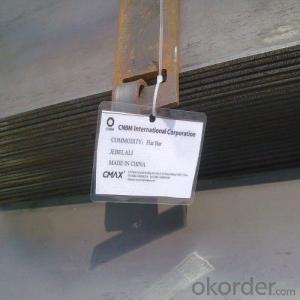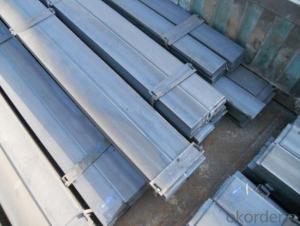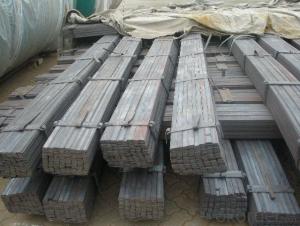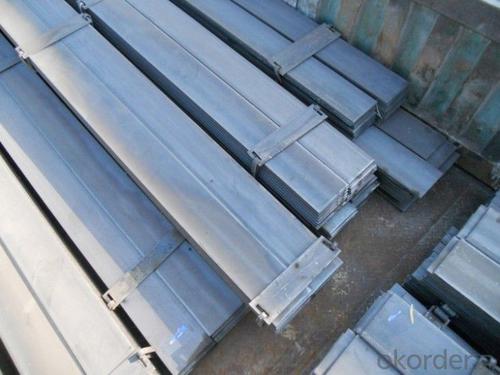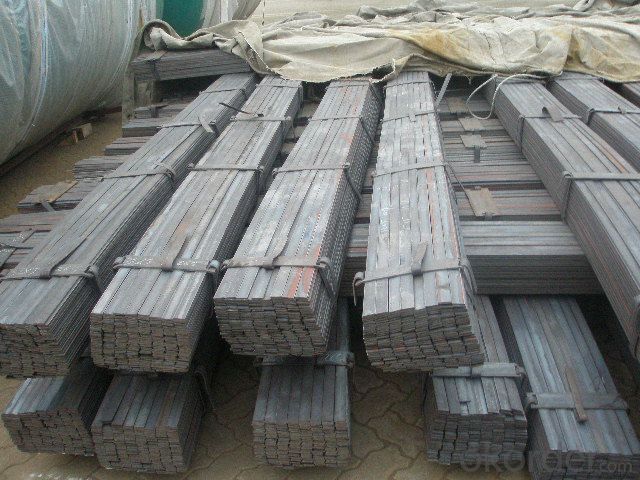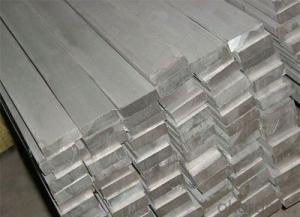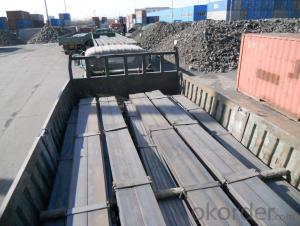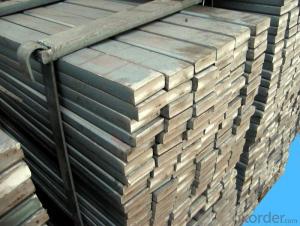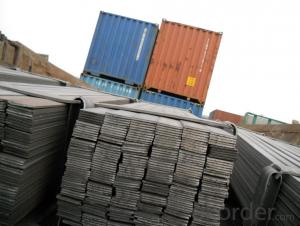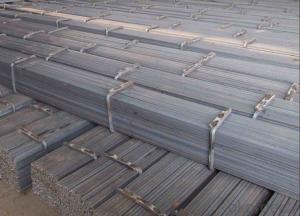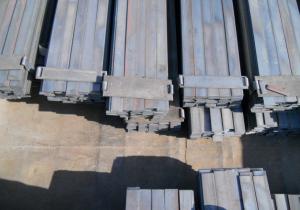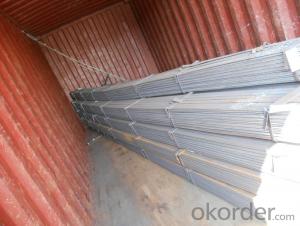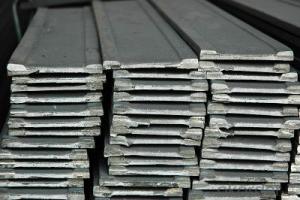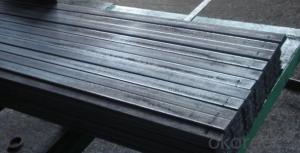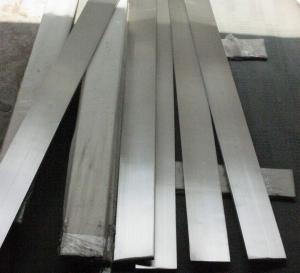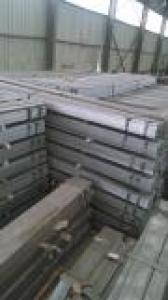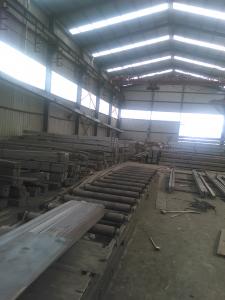Hot Rolled Flat Bars with Material Grade Q235 with Cr Added
- Loading Port:
- Tianjin
- Payment Terms:
- TT OR LC
- Min Order Qty:
- 25 m.t.
- Supply Capability:
- 10000 m.t./month
OKorder Service Pledge
OKorder Financial Service
You Might Also Like
Product Description:
OKorder is offering high quality Flat Bar at great prices with worldwide shipping. Our supplier is a world-class manufacturer of steel, with our products utilized the world over. OKorder annually supplies products to European, North American and Asian markets. We provide quotations within 24 hours of receiving an inquiry and guarantee competitive prices.
Product Applications:
Flat Bars are ideal for structural applications and are widely used in the construction of buildings and bridges, and the manufacturing, petrochemical, and transportation industries.
Product Advantages:
OKorder's Flats Barare durable, strong, and resist corrosion.
Main Product Features:
· Premium quality
· Prompt delivery & seaworthy packing (30 days after receiving deposit)
· Corrosion resistance
· Can be recycled and reused
· Mill test certification
· Professional Service
· Competitive pricing
Product Specifications:
Manufacture: Hot Rolled
Grade: Q195 – 235
Certificates: ISO, SGS, BV, CIQ
Length: 6m – 12m, as per customer request
Packaging: Export packing, nude packing, bundled
Chemical composition of Q235
Alloy No | Grade | Element(%) | ||||
C
| Mn
| S
| P
| Si
| ||
Q235
|
B
|
0.12—0.20 |
0.3—0.7 |
≤0.045 |
≤0.045
|
≤0.3
|
Physical properties of Q235
Alloy No | Grade | Yielding strength point(Mpa) | Tensile strength (Mpa) | Elongation after fracture(%) | ||||||
Thickness (mm) | Thickness (mm) | |||||||||
≤16 | >16--40 | >40--60 | >60--100 | ≤16 | >16--40 | >40--60 | >60--100 | |||
≥ | ≥ | |||||||||
Q235 |
B |
235 |
225 |
215 |
205 |
375--500 |
26 |
25 |
24 |
23 |
FAQ:
Q1: How soon can we receive the product after purchase?
A1: Within three days of placing an order, we will begin production. The specific shipping date is dependent upon international and government factors, but is typically 7 to 10 workdays.
Q2: The products are invoicing on theoritical weight or on actual weight?
A2: We can do it in both manners, according to buyers' requiremnet.
Q3: How soon can we receive the product after purchase?
A3: Within three days of placing an order, we will begin production. The specific shipping date is dependent upon international and government factors, but is typically 7 to 10 workdays.
Images:
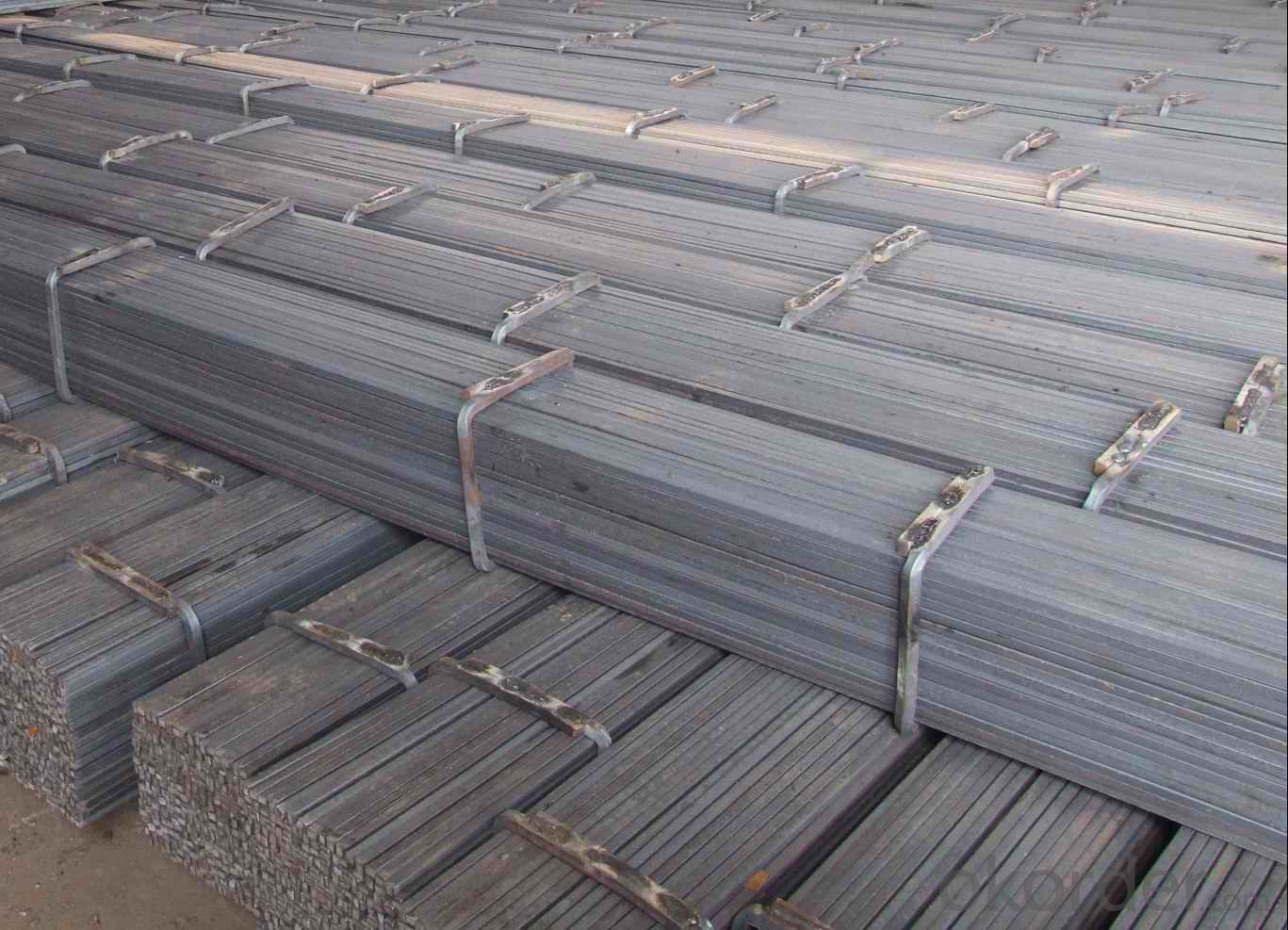
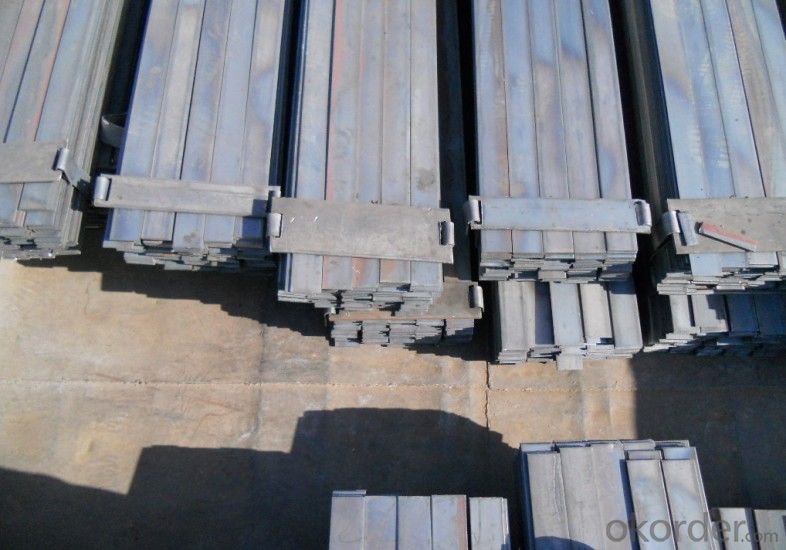
- Q: What are the applications of steel flat bars in construction?
- Due to their versatility and durability, steel flat bars find wide application in the construction industry. These bars serve multiple purposes in various construction projects, including providing structural support, reinforcement, and framing. One of the primary uses of steel flat bars in construction involves their role as supports or beams. They offer additional strength and stability to structures like bridges, buildings, and platforms. Steel flat bars also serve as lintels above windows and doors, providing structural support and preventing sagging or cracking. Another common application of steel flat bars is their use in reinforcing concrete structures. These bars are embedded within concrete to enhance tensile strength and prevent cracking under heavy loads or vibrations. They are commonly employed in the construction of foundations, columns, slabs, and walls. Steel flat bars are also utilized for framing purposes in construction projects. They can function as framing members for walls, ceilings, and roofs, creating a robust and rigid framework. Furthermore, they can act as braces to reinforce structures against lateral forces, such as wind or earthquakes. In addition to their structural applications, steel flat bars are employed for decorative purposes in construction. They can serve as architectural accents, handrails, or ornamental fixtures, enhancing the aesthetic appeal of buildings and structures. Overall, the applications of steel flat bars in construction are extensive. Their strength, durability, and versatility make them an indispensable component in various construction projects, ensuring the stability, safety, and longevity of structures.
- Q: How do steel flat bars perform in high-temperature environments?
- Steel flat bars generally perform well in high-temperature environments. Steel is known for its high melting point and excellent strength at elevated temperatures. The performance of steel flat bars in high-temperature environments primarily depends on the specific grade of steel used and any additional heat treatments or coatings applied. Many steel alloys, such as stainless steel, are designed to withstand high temperatures without significant loss of strength or deformation. These alloys contain elements like chromium, nickel, and molybdenum, which enhance their resistance to heat and corrosion. Stainless steel flat bars, in particular, offer excellent performance in high-temperature environments due to their high chromium content. In extreme high-temperature conditions, steel flat bars may experience some thermal expansion, which could lead to minor dimensional changes. However, this can usually be accounted for during the design process. Additionally, prolonged exposure to high temperatures may cause oxidation or scaling on the surface of the steel, potentially reducing its aesthetic appearance. However, this can be mitigated by using appropriate coatings or treatments. It is important to note that the performance of steel flat bars in high-temperature environments may vary depending on factors such as load, duration of exposure, and the presence of other corrosive elements. Therefore, it is advisable to consult with materials engineers or industry experts to select the most suitable steel grade and take necessary precautions when using steel flat bars in high-temperature applications.
- Q: Can steel flat bars be used for machinery or equipment?
- Indeed, machinery or equipment can utilize steel flat bars. Steel, an adaptable and long-lasting substance, finds extensive employment across diverse sectors such as manufacturing and construction. The sturdiness, inflexibility, and capacity to resist deformation of steel flat bars render them a popular choice for constructing machinery and equipment. These bars can be customized, welded, and machined to meet precise specifications, making them suitable for an extensive array of uses. Furthermore, steel flat bars exhibit the capability to endure significant burdens, making them exceptionally suitable for bolstering and reinforcing machinery and equipment.
- Q: How do steel flat bars perform in terms of strength and durability?
- Steel flat bars are known for their exceptional strength and durability. Due to their solid construction and high carbon content, steel flat bars exhibit superior tensile strength and resistance to bending, making them ideal for applications that require robust support or load-bearing capabilities. Additionally, their resistance to corrosion and wear ensures long-term durability, making steel flat bars a reliable choice for various structural and industrial purposes.
- Q: What is the maximum length-to-height ratio for steel flat bars?
- The maximum length-to-height ratio for steel flat bars is determined by various factors such as the specific steel grade, manufacturing process, and industry standards. However, in general, the length-to-height ratio for steel flat bars typically ranges from 6:1 to 12:1. This means that the length of the flat bar can be up to 6 to 12 times its height. It is important to note that exceeding these ratios may result in reduced structural integrity and increased risk of buckling or bending. Therefore, it is crucial to consult relevant industry standards and engineering guidelines to ensure safe and efficient usage of steel flat bars in different applications.
- Q: How do you prevent warping of steel flat bars during fabrication?
- To prevent warping of steel flat bars during fabrication, several measures can be taken. Firstly, it is crucial to ensure that the bars are stored and handled properly before fabrication, as any distortion or bending can lead to warping. Additionally, maintaining proper temperature and humidity conditions in the fabrication area is essential, as high temperatures can cause the bars to expand unevenly and result in warping. Adequate cooling techniques, such as quenching or controlled cooling, can also be employed to minimize the risk of warping. Lastly, using appropriate welding techniques and evenly distributing heat during the fabrication process can help prevent warping of steel flat bars.
- Q: How do you prevent scaling or oxidation on steel flat bars during heat treatment?
- To prevent scaling or oxidation on steel flat bars during heat treatment, a common approach is to use a protective atmosphere or medium such as nitrogen or controlled atmosphere furnaces. Additionally, applying a coating or using stainless steel or heat-resistant alloys can help prevent scaling or oxidation. Employing proper handling techniques, such as avoiding exposure to moisture or corrosive substances, can also contribute to minimizing scaling or oxidation during heat treatment.
- Q: Why is it better to use round steel than that of flat steel in lightning protection?
- From the cross section, thermal stability as long as meet the discharge current can be, but from the lightning protection downlead selection, selection of round steel in order to prevent the tip discharge, so we generally do not choose flat edges as grounding, buried in the earth round and not flat how much difference, but in the same section of the case, of course, the contact area of flat steel and soil are large, relatively scattered large flow area, the construction is more convenient, in terms of price, we are willing to use flat, as for the problem of anti-corrosion, anti-corrosion paint, zinc can be taken, you know the thickness of galvanized steel pipe is generally not flat, so it really depends on the term for the use of galvanized flat steel is not bad.
- Q: Can roof strip be replaced with steel pipe instead of flat steel and round steel? Are there any examples of practical use?
- Steel pipes can be used instead of flat steel or round steel, and some of the structures on the buildings are connected and grounded by using steel pipe handrails on the walls of their daughters.
- Q: Can steel flat bars be used for making tools?
- Yes, steel flat bars can be used for making tools. Steel is a strong and durable material, making it suitable for tool manufacturing. Flat bars can be easily shaped, cut, and welded into various tool designs, making them versatile for tool-making purposes.
Send your message to us
Hot Rolled Flat Bars with Material Grade Q235 with Cr Added
- Loading Port:
- Tianjin
- Payment Terms:
- TT OR LC
- Min Order Qty:
- 25 m.t.
- Supply Capability:
- 10000 m.t./month
OKorder Service Pledge
OKorder Financial Service
Similar products
Hot products
Hot Searches
Related keywords
